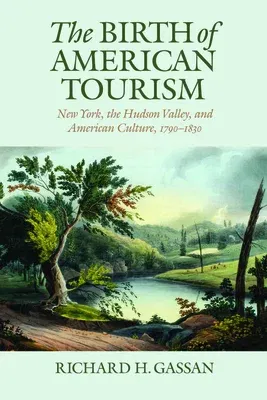Today the idea of traveling within the United States for leisure
purposes is so commonplace it is hard to imagine a time when tourism was
not a staple of our cultural life. Yet as Richard H. Gassan persuasively
demonstrates, at the beginning of the nineteenth century travel for
leisure was strictly an aristocratic luxury beyond the means of ordinary
Americans. It wasn't until the second decade of the century that the
first middle-class tourists began to follow the lead of the well-to-do,
making trips up the Hudson River valley north of New York City, and in a
few cases beyond. At first just a trickle, by 1830 the tide of tourism
had become a flood, a cultural change that signaled a profound societal
shift as the United States stepped onto the road that would eventually
lead to a modern consumer society.
According to Gassan, the origins of American tourism in the Hudson
Valley can be traced to a confluence of historical accidents, including
the proximity of the region to the most rapidly growing financial and
population center in the country, with its expanding middle class, and
the remarkable beauty of the valley itself. But other developments also
played a role, from the proliferation of hotels to accommodate tourists,
to the construction of an efficient transportation network to get them
to their destinations, to the creation of a set of cultural attractions
that invested their experience with meaning. In the works of Washington
Irving and James Fenimore Cooper and the paintings of Thomas Cole and
others of the Hudson River School, travelers in the region encountered
the nation's first literary and artistic movements. Tourism thus did
more than provide an escape from the routines of everyday urban life; it
also helped Americans of the early republic shape a sense of national
identity.

